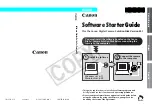
The AM6070 DAC which is used for decoding every LM-1 voices to a linear voltage provides a 15-
segment linear approximation to the Bell System µ-255 companding law. The law is implemented by
using three bits to select one of eight binarily-related chords (or segments) and four bits to select one
of sixteen linearly-related steps within each chord. A sign bit determines signal polarity and an
encode/decode input determines the mode of operation.
It was a popular choice for 80s Pro-Audio gear. The companding law gave the 8-bit sounds 12-bit
performance.
At that time, memory was pretty expensive and storing digital data in a tiny space was the way to
go. The LM-1 samples were stored in µ-255 companded format in 8-bit, this is the main task of the
AM6070 to turn this digital encoded data into an analog voltage byte after byte.
If you try to import a raw binary EPROM image in for example an audio editor like Audacity you will
end up with a bunch of noise because companded format is not linear, it needs to be decoded first.
Basically, the DAC holds a constant value until the next sample comes in. To be theoretically proper,
the extra higher frequency stuff is supposed to be removed by a reconstruction filter, resulting in a
smooth signal and correctly reproduced spectrum. But vintage digital hardware don't do this (or
badly), which instead results in a bright, gritty sound.
Summary of Contents for LM-1
Page 1: ......
Page 2: ...LM 1 DRUMS www alyjameslab com USER MANUAL 1 0 BY Aly James 2014 2015 ALYJAMESLAB ...
Page 12: ...THE AM6070 DAC ...
Page 35: ... 2014 2015 ALYJAMESLAB ...














































